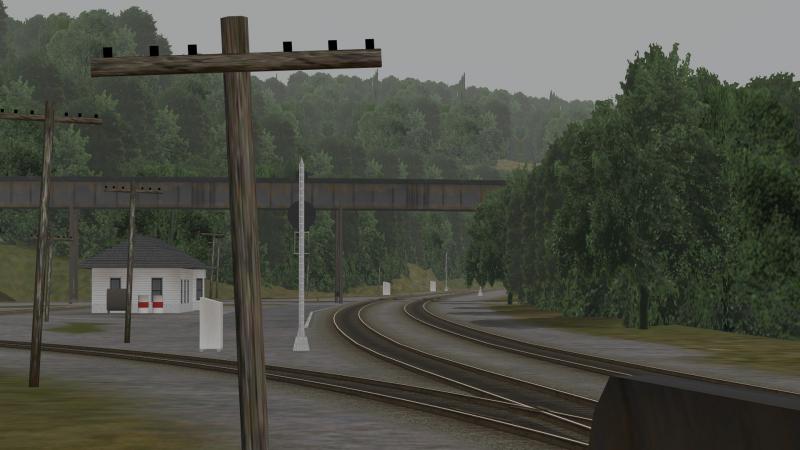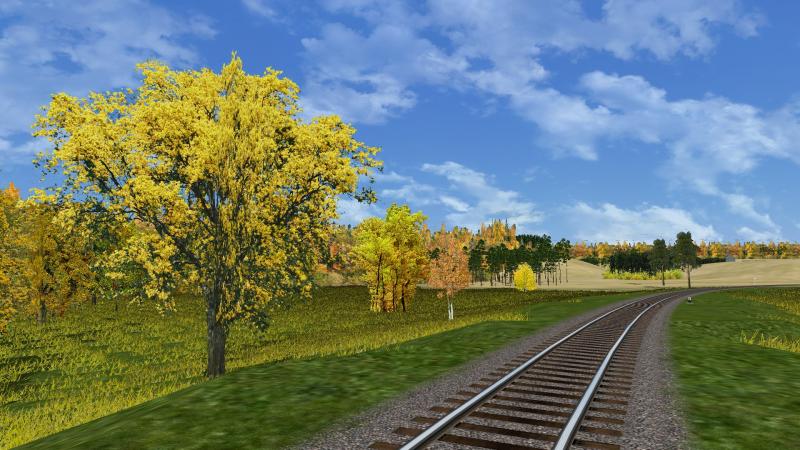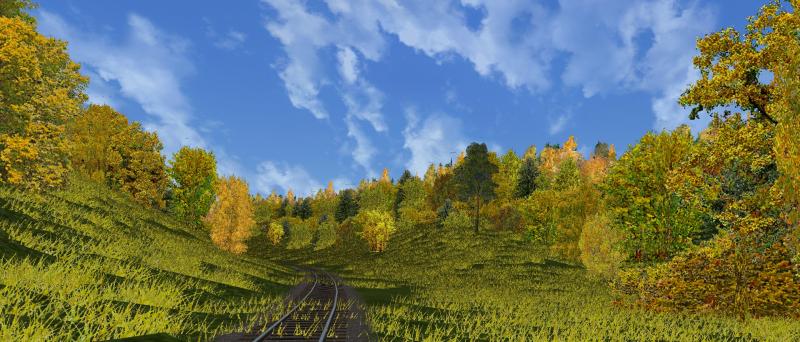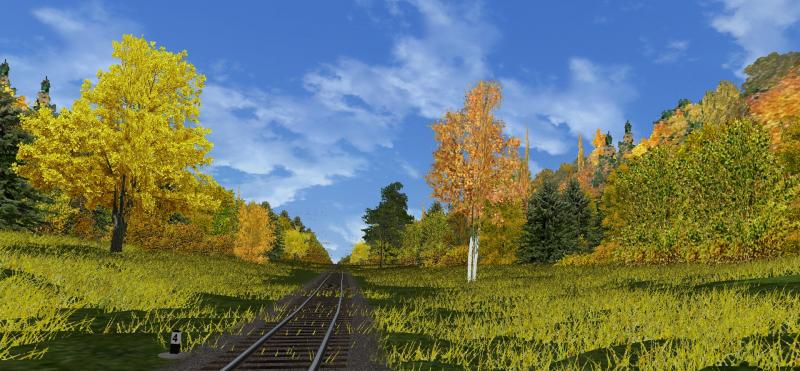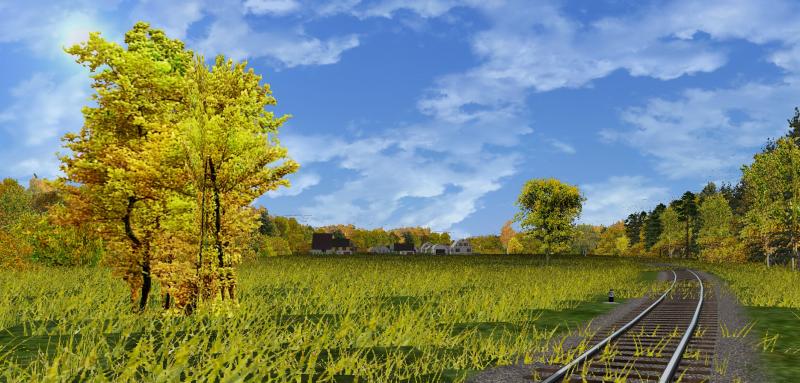No Trains Everything else
#11

Posted 06 November 2022 - 12:22 PM
Ah! An acoustic London & Port Stanley!
I miss the wires, though. ;)
I miss the wires, though. ;)
#13

Posted 07 November 2022 - 01:09 PM
Hi Folks,
Son of a birch - EVERYONE is stringing wire - I need to figure this out - argh.
:)
Beautiful shots with homespun details.
Regards,
Scott
Son of a birch - EVERYONE is stringing wire - I need to figure this out - argh.
:)
Beautiful shots with homespun details.
Regards,
Scott
#14

Posted 07 November 2022 - 01:11 PM
#15

Posted 07 November 2022 - 02:21 PM
Nice, I guess I should have specified no prototype pictures.
Randy
Randy
#16

Posted 12 November 2022 - 09:02 AM
#18

Posted 18 December 2022 - 03:25 PM
 scottb613, on 07 November 2022 - 01:09 PM, said:
scottb613, on 07 November 2022 - 01:09 PM, said:
Hi Folks,
Son of a birch - EVERYONE is stringing wire - I need to figure this out - argh.
:)
Beautiful shots with homespun details.
Regards,
Scott
Son of a birch - EVERYONE is stringing wire - I need to figure this out - argh.
:)
Beautiful shots with homespun details.
Regards,
Scott
I would start by placing a set of road shapes along the desired run of the poles. Most of the roads will be of one length -- whatever distance you want between the poles. There may be exceptions, such as when the wires are to go over a rail line you obviously don't want a pole too close tot he tracks). Adjusting the roads to follow the terrain is easier than trying to do the same with wires and poles. When the road was in place I'd put a pole at the exact same place as the rolling road shapes origin. I'd then place the appropriate set of wires to match the length of the road shape below it using the location of the pole and then change the pitch of the wires to match the road. I'd then elevate it up to the crossarms. When the next pole is placed the wires will match it's crossarms.
Obviously the wire shapes need to be offset a few inches for their ends are at the centerline of the crossarms; you may need wires of various lengths (e.g., crossing a street intersection may well be a lot shorter than the norm) and for sharper changes of pitch it is often better to use a set of single wires (same horizontal plane that one set of many wires stacked above each other).
I've used this technique for street telephone poles, trolley overhead poles,and high voltage power lines.

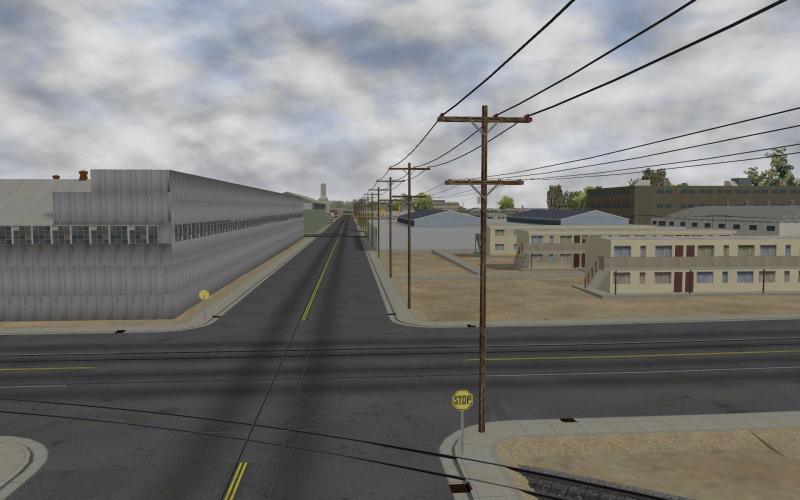

Every situation is different and so the work process can vary... and TSRE does things that MSTS_RE could not but they all basically require the same thing -- poles and wires are different shapes, poles are always vertical, wires are most often not horizontal and that later fact changes the distance between poles. This makes placement of the next pole the problem you have to solve each and every time. And be aware, if there is a lot of variation in the altitude of pole placement you may be better off setting these shapes up as tracks and letting the software snap them end to end along the run.
When done, remove the road shapes.
Last thought, if the run needs to make some turns you will have to figure out how the direction of the next set of wires varies away from the direction of the poles and have wires of different lengths just like the inside track of a 4t curve is shorter than the outer track.
WRT so called utility poles. This is most often a power pole/ HV wires, household voltage wires, and maybe telphone wires. There must be a safety gap between the types of wires (IIRC this is 6ft but it might be 8ft). The HV wires will be at the highest level, Household voltage in the middle and telephone wires lowest. HV wires normally come in sets of three. Household voltage wires are the next lower level and are often 4 wires, two feeding one side of the road and two for the other. If there are telphone fires they will be lowest. If you have Household voltage wires don't forget to run a feeder wire to the buildings.
Did I say every situation is different? Always.
#20

Posted 19 December 2022 - 03:39 PM
 Genma Saotome, on 18 December 2022 - 03:25 PM, said:
Genma Saotome, on 18 December 2022 - 03:25 PM, said:
I would start by placing a set of road shapes along the desired run of the poles. Most of the roads will be of one length -- whatever distance you want between the poles. There may be exceptions, such as when the wires are to go over a rail line you obviously don't want a pole too close tot he tracks). Adjusting the roads to follow the terrain is easier than trying to do the same with wires and poles. When the road was in place I'd put a pole at the exact same place as the rolling road shapes origin. I'd then place the appropriate set of wires to match the length of the road shape below it using the location of the pole and then change the pitch of the wires to match the road. I'd then elevate it up to the crossarms. When the next pole is placed the wires will match it's crossarms.
Obviously the wire shapes need to be offset a few inches for their ends are at the centerline of the crossarms; you may need wires of various lengths (e.g., crossing a street intersection may well be a lot shorter than the norm) and for sharper changes of pitch it is often better to use a set of single wires (same horizontal plane that one set of many wires stacked above each other).
I've used this technique for street telephone poles, trolley overhead poles,and high voltage power lines.
Every situation is different and so the work process can vary... and TSRE does things that MSTS_RE could not but they all basically require the same thing -- poles and wires are different shapes, poles are always vertical, wires are most often not horizontal and that later fact changes the distance between poles. This makes placement of the next pole the problem you have to solve each and every time. And be aware, if there is a lot of variation in the altitude of pole placement you may be better off setting these shapes up as tracks and letting the software snap them end to end along the run.
When done, remove the road shapes.
Last thought, if the run needs to make some turns you will have to figure out how the direction of the next set of wires varies away from the direction of the poles and have wires of different lengths just like the inside track of a 4t curve is shorter than the outer track.
WRT so called utility poles. This is most often a power pole/ HV wires, household voltage wires, and maybe telphone wires. There must be a safety gap between the types of wires (IIRC this is 6ft but it might be 8ft). The HV wires will be at the highest level, Household voltage in the middle and telephone wires lowest. HV wires normally come in sets of three. Household voltage wires are the next lower level and are often 4 wires, two feeding one side of the road and two for the other. If there are telphone fires they will be lowest. If you have Household voltage wires don't forget to run a feeder wire to the buildings.
Did I say every situation is different? Always.
Obviously the wire shapes need to be offset a few inches for their ends are at the centerline of the crossarms; you may need wires of various lengths (e.g., crossing a street intersection may well be a lot shorter than the norm) and for sharper changes of pitch it is often better to use a set of single wires (same horizontal plane that one set of many wires stacked above each other).
I've used this technique for street telephone poles, trolley overhead poles,and high voltage power lines.
Every situation is different and so the work process can vary... and TSRE does things that MSTS_RE could not but they all basically require the same thing -- poles and wires are different shapes, poles are always vertical, wires are most often not horizontal and that later fact changes the distance between poles. This makes placement of the next pole the problem you have to solve each and every time. And be aware, if there is a lot of variation in the altitude of pole placement you may be better off setting these shapes up as tracks and letting the software snap them end to end along the run.
When done, remove the road shapes.
Last thought, if the run needs to make some turns you will have to figure out how the direction of the next set of wires varies away from the direction of the poles and have wires of different lengths just like the inside track of a 4t curve is shorter than the outer track.
WRT so called utility poles. This is most often a power pole/ HV wires, household voltage wires, and maybe telphone wires. There must be a safety gap between the types of wires (IIRC this is 6ft but it might be 8ft). The HV wires will be at the highest level, Household voltage in the middle and telephone wires lowest. HV wires normally come in sets of three. Household voltage wires are the next lower level and are often 4 wires, two feeding one side of the road and two for the other. If there are telphone fires they will be lowest. If you have Household voltage wires don't forget to run a feeder wire to the buildings.
Did I say every situation is different? Always.
Hi Dave,
Thanks for taking the time to write this up. I think I'm following - I just need to get into TSRE and give it a shot while following your instructions.
Seriously though - we've discussed it before - we need a BETTER way to string wires.
:sign_thanks:
Regards,
Scott
#21

Posted 22 April 2023 - 09:52 PM
#22

Posted 24 April 2023 - 08:33 AM

 Log In
Log In Register Now!
Register Now! Help
Help





